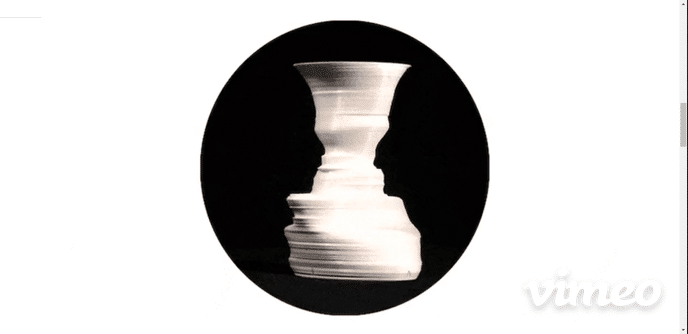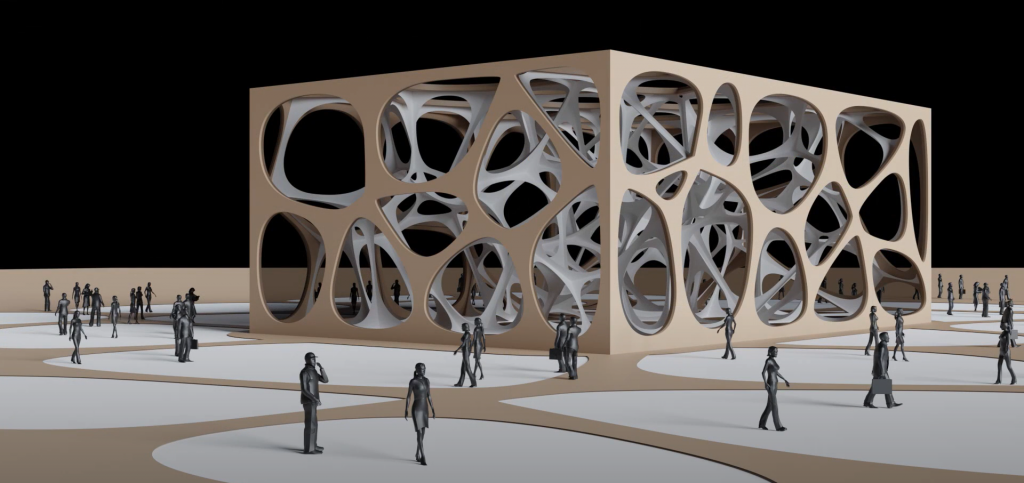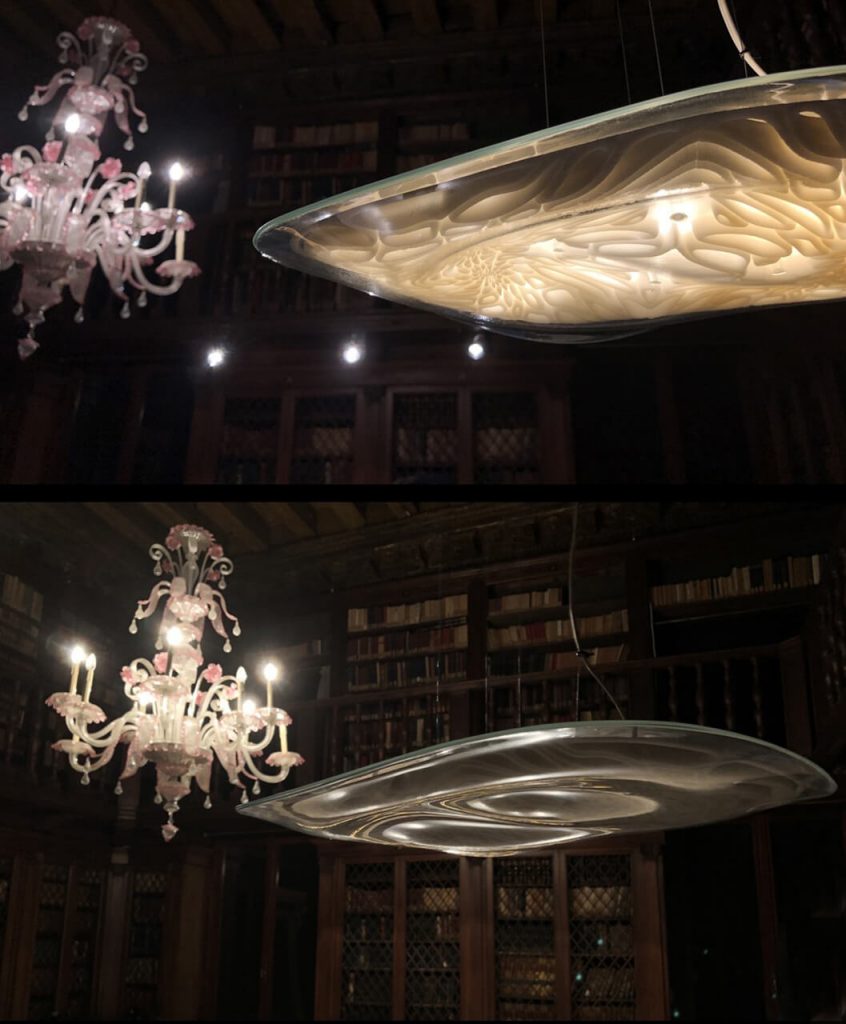
One project that especially inspired me was Jenny Sabin’s’ Purl installation in Abu Dhabi. The project is a very immersive example of Computational Fabrication being used to create an environment. The installation serves as an “interactive” canopy, which has digitally weaved photoluminescent fibers. What really inspires me about this piece is the incorporation of computational biomimicry, and this allusion to patterns in nature with this high tech piece. It relates to Andy Lomas’ Cellular Forms exploration, which highlights the beauty of morphogenetic processes through an ambiguously generated form. The piece is extremely organic, which bolsters its intent/message of fostering a community/ecosystem within the commissioned area.
As per the article, Sabin’s work employs the use of modularity, and understanding how the parameters of these recursive functions produce these overarching environments. In context of the concept of gestaltum and parametric objects, it’s interesting to recognize the variables that were adjusted to create the specific weaves – whether the relationship between the hexagonal shapes indicates the numbers used?
Purl, Jenny Sabin 2020
![[OLD SEMESTER] 15-104 • Introduction to Computing for Creative Practice](../../../../wp-content/uploads/2023/09/stop-banner.png)





